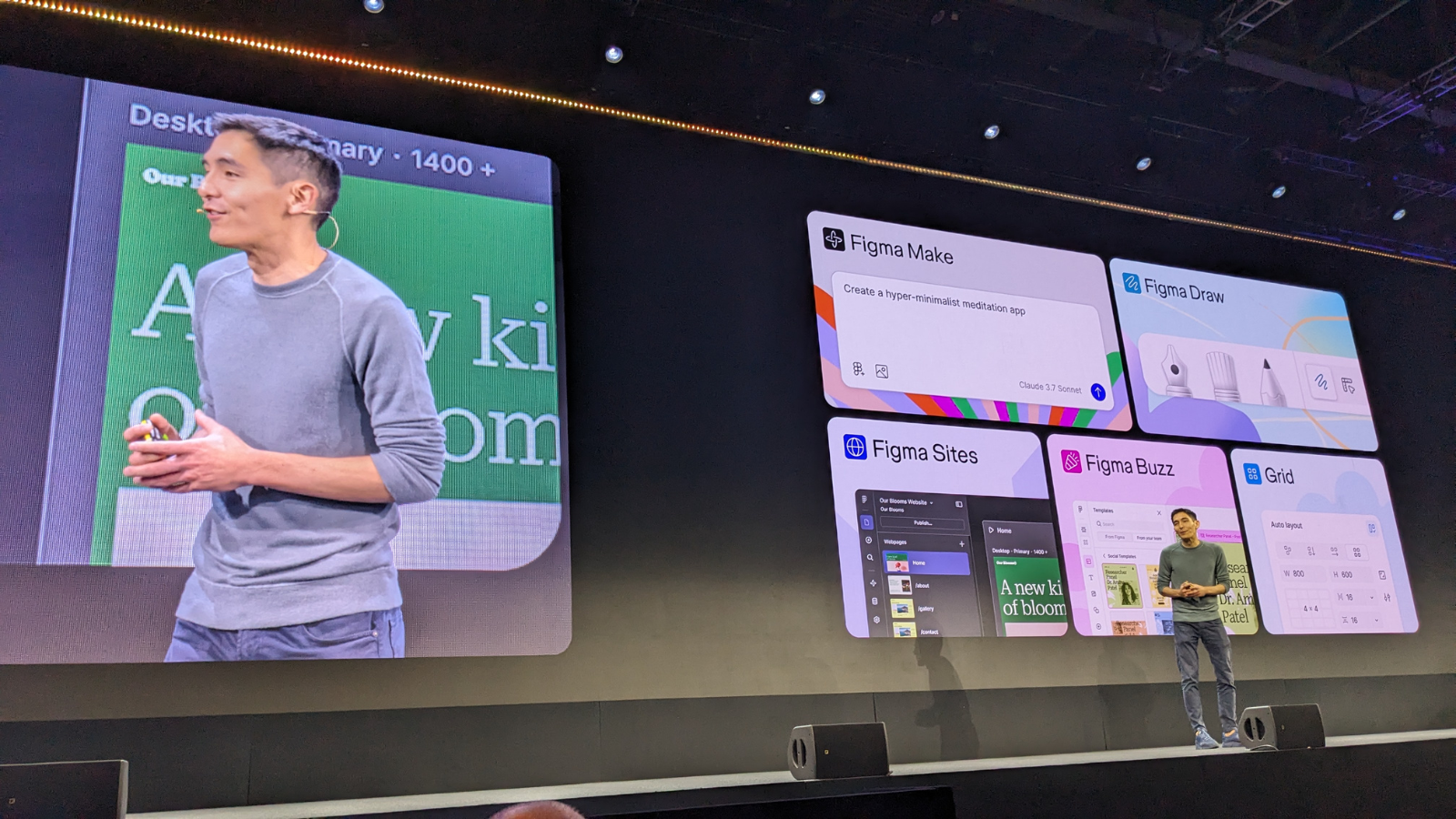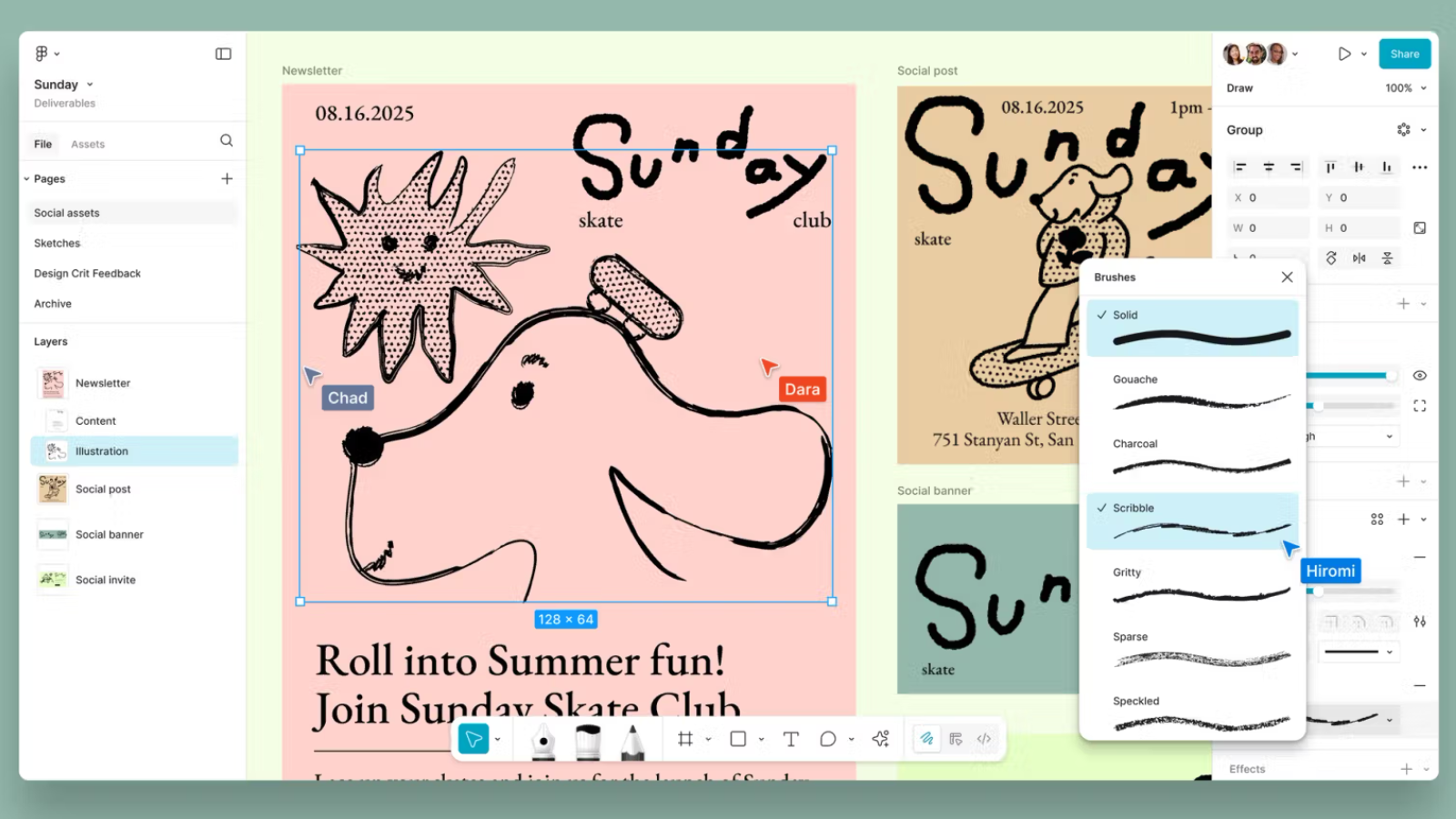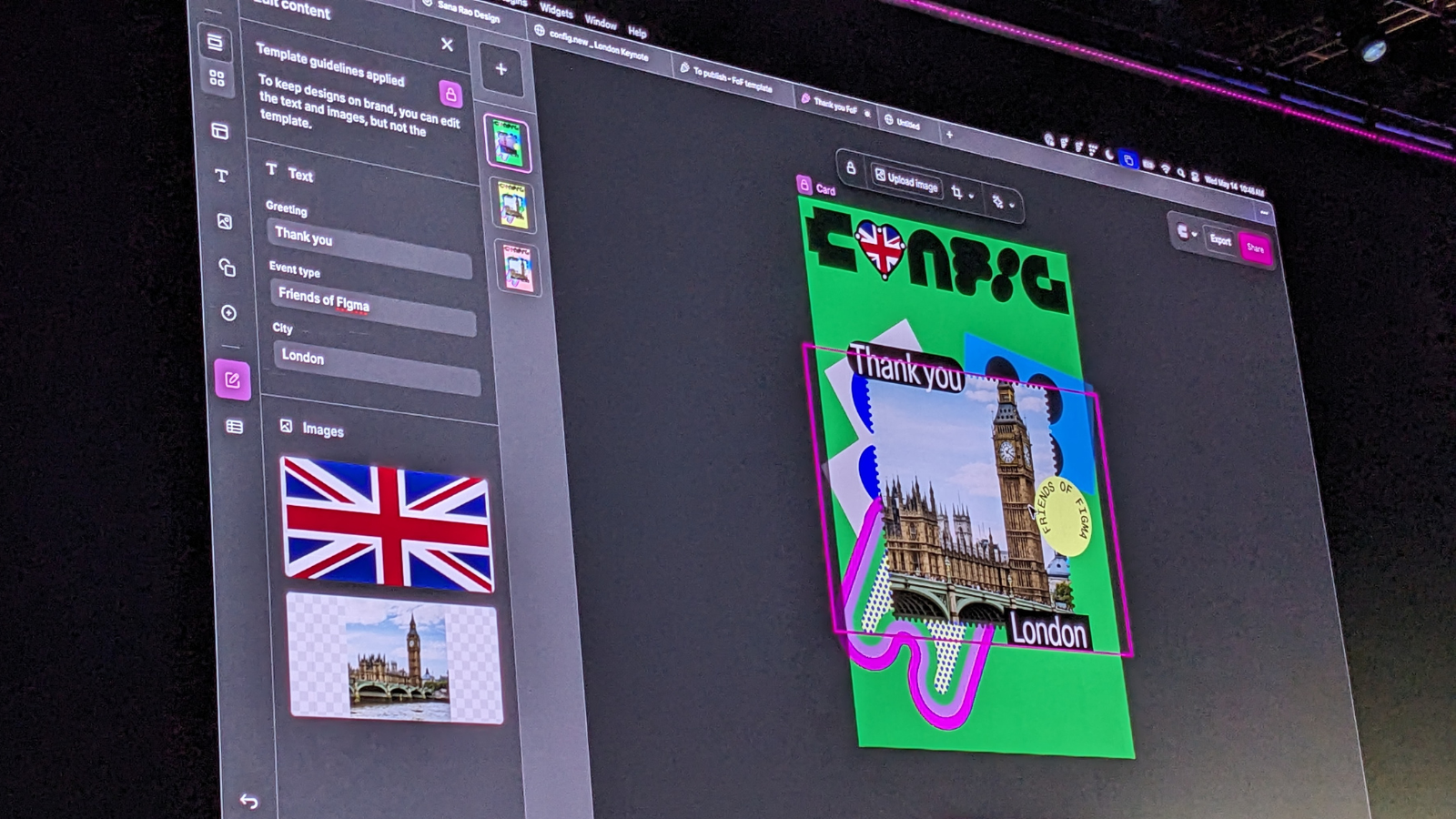- Figma Introduces Exciting New Tools for Design and Development
- Emphasizing AI-Driven Enhancements
- Aiming to Optimize the Creative Process from Concept to Completion
Last week in San Francisco, Figma made waves by unveiling four pioneering tools aimed at revolutionizing the realms of design and development.
The newly launched Figma Make, Figma Sites, Figma Draw, and Figma Buzz are set to empower teams by bridging the gaps between ideation and execution, facilitating the creation of everything from vector illustrations to fully operational websites—all significantly enhanced through cutting-edge artificial intelligence to expedite the development process.
Participation in the Config London event provided an in-depth look at these advancements and a glimpse into how they align with Figma’s mission of transforming ideas into market-ready products seamlessly.
Efficient Design Process
A major hurdle that contemporary businesses face is compartmentalization among teams, which leads to redundant efforts and a lack of cohesion.
Figma’s latest suite, alongside its existing Figma Design and FigJam platforms, aims to foster collaboration and eliminate silos among departments.
Chief Product Officer Yuhki Yamashita shared the overarching goal: “Our focus is on empowering users to transition effortlessly from an abstract idea to a tangible product. Our forthcoming tools will be designed with this principle at their core, driving efficiency and encouraging innovation.”
Figma Make serves as a robust hub for content creation, enabling users to embark on projects from scratch or import existing designs for real-time collaboration with team members. This collaborative process is termed a “multiplayer” experience. Once designs are polished, they can be adapted using tools like Figma Sites.
Figma is also advocating for a culture of rapid iteration, encouraging teams to discard non-viable designs and embrace brainstorming as a way to innovate. As Yamashita stated, “We explored avenues for simplifying the leap from conceptual thoughts to tangible designs that can be swiftly tested with users. If an idea doesn’t resonate, it presents a chance to pivot and improve.”
Figma Sites is an all-in-one website creation tool powered by AI, integrating design, prototyping, and publishing into a single platform. It allows developers to focus on customizing templates and incorporating interactions while AI assists in streamlining tasks. Leveraging grids enhances the process of creating responsive websites—though a basic understanding of design principles is still beneficial.
During Config London, I had the chance to view an engaging demonstration where simple text was transformed by AI into several dynamic designs, each boasting unique hover effects. Yamashita also pointed out the practicalities of API integration within the tool.
Figma’s strategic vision for expansion is evident, as Yamashita revealed, “We strive to accommodate larger scale applications, be it content-rich marketing sites or blogs. We are developing a user-friendly CMS to make content management simpler for those without design expertise.”
Figma Draw steps into the ring as Figma’s answer to Adobe Illustrator, focusing on the ability for designers to create unique and expressive art. The aim is to transcend conventional aesthetics and amplify individual creativity.
At the showcase, I was impressed by various creations from the Figma community, which ranged from playful hand-drawn graphics to breathtaking photorealistic illustrations—each exhibiting the platform’s powerful capabilities. Yamashita remarked, “We’re integrating textures and noise elements to achieve a more authentic feel while maintaining the precision of vectors.”
Figma Buzz directly tackles the challenges encountered in social media marketing, offering a platform for promoting finalized products online. It significantly simplifies the process for team members lacking familiarity with Figma Design to produce brand-consistent content. This tool is essential for both marketing professionals and designers, facilitating the creation of engaging on-brand assets.
The team aimed to streamline content generation, envisioning a user experience similar to filling out a form to produce lively outputs. Figma Buzz realizes this goal by seamlessly connecting with Figma Design, letting users enjoy design capabilities without the complexity often linked to design software.
I watched Figma Buzz in action, and the speed at which it operated was astonishing. Within moments, one social media post was adapted into 80 unique variations, adjusting language, imagery, and cultural symbols accordingly— all while ensuring brand consistency.
If you’re interested in Figma’s latest offerings, explore this link to discover the Products section. The complete keynote by Yamashita and Figma’s CEO Dylan Field is available on YouTube here.

























